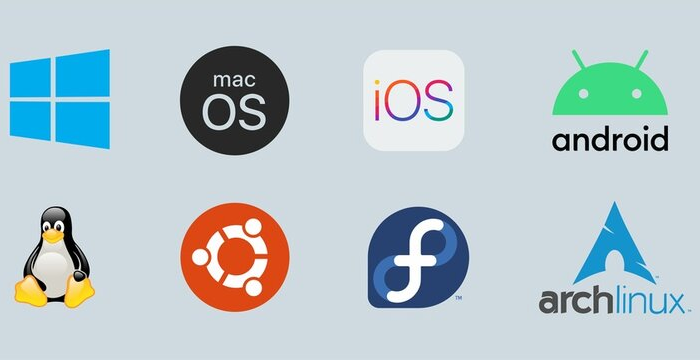What Is Malvertising and How to Prevent It
What is malvertising?
Malvertising is derived from two terms – “advertising” and “malware” – and is a common tactic used to attack ad campaigns. Cybercriminals embed malware into otherwise safe advertisements in specific places on the Internet. This helps them deliver the malware to a device as soon as an online user clicks on the ad. You may not need to click on the ad in some situations. Just visiting the site hosting the malicious ads may be enough to infect your computer. Attackers can infect ads in a number of ways. They will therefore be powerful enough to run any type of malware.
How Malvertising Works
Malicious advertisements are dispersed by techniques similar to conventional online advertisements. Imposters can launch malicious attacks by purchasing ad space from ad networks and then submitting images infected with malicious code.
They expect legitimate websites to serve these ads and the advertiser will not be able to distinguish between trusted ads and harmful ads, leading to device contamination, before malicious ads are released. detected and eliminated. After malicious ads gain the advertiser’s approval, they are served on legitimate websites. Hackers can use redirects to send users to a malicious site, and victims will have no idea what is going on because they expect a redirect when they click on an ad.
During the time spent on the malicious site, the code will run in the background, with the aim of downloading malware onto the computer.
Click here to download RAM Free Antivirus
Examples: How malware is inserted into ads
Attackers use several delivery mechanisms to insert malicious code into advertisements:
- Malware in Advertising Calls – When a website displays a page with an advertisement, the ad exchange sends advertisements to the user through many third parties. One of these third-party servers can be compromised by an attacker, who can add malicious code to the ad payload.
- Post-click malware – when the user clicks on an ad, it is typically redirected between multiple URLs, ending with the ad’s landing page. If an attacker compromises one of the URLs along this delivery path, he can execute malicious code.
- Malware in creative ad – malware can be embedded in text or banner ads. For example, in HTML5 it is possible to serve an ad in the form of a combination of images and JavaScript, which may contain malicious code. Ad networks that serve ads in Flash (.swf) format are particularly vulnerable.
- Malware in a Pixel – Pixels are code embedded in an ad call or landing page, which sends data to a server for tracking. A legitimate pixel only sends data. If an attacker intercepts the delivery path of a pixel, he can send a response, containing malicious code, to the user’s browser.
- Malware in Video – Video players do not protect against malware. For example, a standard video format called VAST contains third-party pixels, which may contain malicious code. Videos can infect users by showing malicious URL at the end of the video.
Malware in Flash Video –
Malware in Flash Video – Flash-based videos can inject an Iframe into the page, which downloads malware even without the user clicking on the video. Flash files can also load a pre-roll banner (a static image the user can display while the file is loading). Attackers can inject malicious code into the pre-roll banner, and it can run even without the user clicking on the video.
- Malware on a landing page – even on legitimate landing pages served by reputable websites, there may be clickable elements that execute malicious code. This type of malware is especially dangerous because users click on an ad, land on a real, legitimate landing page, but are infected with a malicious element on the page.
What Is Malvertising’s Main Risk?
When it comes to malicious ads and malicious ad campaigns, here’s what you need to know:
Attackers can get your financial information. Some malicious advertisements create to trick you into disclosing personal information such as financial information. If attackers gain access to your bank account numbers or bank passwords, they could steal money from you before you even observe them.
Perhaps impostors could rack up your credit card debt. If hackers are successful in stealing your credit card information, they can use your cards to buy things for themselves. If you’re one of those people who usually doesn’t check their credit card bills, you could end up paying for other people’s purchases. Your devices can be infected. Malvertising is also capable of installing all kinds of viruses and malicious code on your device. You might not even know they exist, but it can be used by hackers to steal your passwords, track your keystrokes, or gain full control of your computer.
Malvertising vs Ad Malware (Adware)
Malvertising and adware are two terms that are sometimes used interchangeably, although they are significantly different.
Unlike malvertising, which launches an attack through infecte advertising, adware is a program that can be used to track a user’s web activity in order to display relevant or personalized advertisements. All malicious ads are considere malicious in nature, while some forms of adware include in legitimate software packages. While adware often raises concerns about data privacy and security, it does not allow cybercriminals to take control of the system or to alter, exfiltrate, or delete data.
Sources of malvertising
There are several types of websites cyberattackers use to target online users with malvertising. They include:
- Torrent sites
- Illegal streaming sites
- Online dating
- Gambling sites
- Pornographic sites
- Sites with unreliable content
- and Sites offering Flash games
- offering Sites free downloads/software/cracks
- Sites offering free coupons/discounts/deals
- Sites offering free quiz/online games
- Not safe for work content Sites offering
- However, malvertising isn’t limite to these sources. It can affect almost any website.
How to Protect Yourself against Malvertising
- Activate click-to-play for your browsers;
- Use ad blockers to block all ads;
- Use full antivirus software to prevent automatic malware download;
- Try not to use Flash and Java (as there are many Java and Flash vulnerabilities used as entry points for malicious attacks;
- Update browsers and plugins to avoid malicious attacks
- Identify advertisements that appear illegitimate (we explained how in this article);
- Search for a business without clicking on an ad;
- Resist clicking on ads, even if they appear to be from well-respected companies;
- Stay informed of the latest malicious advertising scandals.
Install RAM Antivirus
Whatever other precautions you take, some threats are sure to pass. When it comes to thwarting malicious downloads, there is no substitute for the protection offer by top-of-the-line antivirus software. To avoid malicious ads you need to install cybersecurity software. RAM Free Antivirus proactively detect and protect against the wide range of malware, it will also locate and remove potentially harmful programs or files already installed on your computer.
This is the best way to protect your computer from malware, especially malicious advertising. You need a reputable antivirus program on your computer to protect yourself from any form of cyber attack. You will also need to update your software regularly to allow it to meet your specific needs. Updates are there to reduce your risk of vulnerability from time to time.
RAM Ultimate Antivirus is all-in-one cybersecurity software that gives you the extra layer of protection you need against malicious advertising and other forms of malware that your computer may be exposed to. Download RAM Ultimate Antivirus and prepare your device for optimal protection.
This article covers the answers to some of your frequently asked questions:
People May Also Like…
Operating System (OS) security
Securing Operating System: Protecting Digital Environments In the rapidly changing world of technology, operating system (OS) security is a vital line of defence against online attacks. Operating system security is the first line of defence
Data protection
What is the data protection Data protection has grown to be of utmost importance to both individuals and organizations in the connected. world of today, where information travels quickly across many digital
What is a security software
Security software It is impossible to overstate the value of strong security software in today's digital world. Individuals and organizations must take proactive measures to safeguard their sensitive data and defend against
Website reputation analysis
Website reputation analysis Websites are incredibly important for establishing an online presence for businesses, organizations, and people in the modern world. Analysis and evaluation of a website's reputation are crucial because there are









